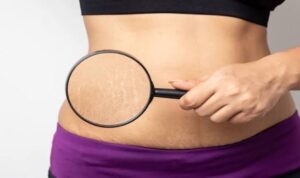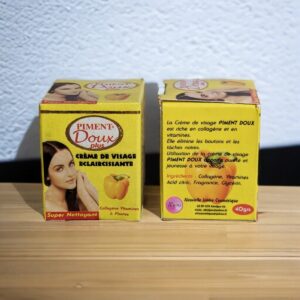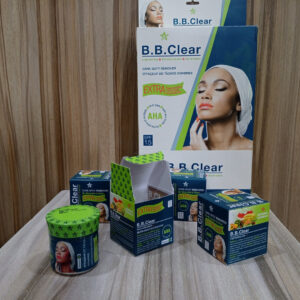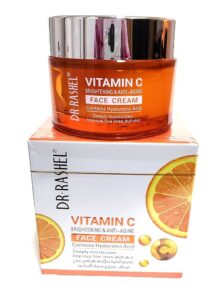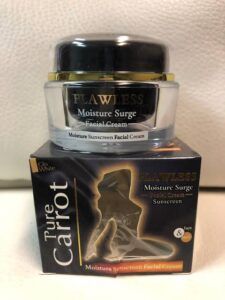
Learning how to moisturize dry skin naturally can help you manage dryness without irritating your skin or breaking the bank.
In this article, we’ll cover 4 easy ways to moisturize dry skin naturally, using ingredients you probably already have at home.
How to Moisturize Dry Skin Naturally with Honey
Honey is a superstar in the big natural skin care scene, and with good reason. It is not only sweet, but it is also a natural humectant, and thus, it pulls moisture out of the air into your skin. Still, there is more to say. The best thing about honey is that it possesses enzymes and antioxidants that will calm inflammation and heal the skin barrier, which is essential to people with dry, sensitive skin. One client once loved a honey mask because she had an adverse reaction to a purchased moisturizing cream; it reduced her redness overnight.
As a moisturizer, begin with straightforward honey: spread a little of unrefined, organic honey over your face and leave it there about 15-20 minutes, after which wash it away with warm water. How does this work? Honey has a sticky texture that makes it stick to your skin and trap in moisture.
To add a twist that is uniquely effective, you can combine a teaspoon of honey with a pinch of cinnamon. Cinnamon is anti-inflammatory, which can boost the action of honey, resulting in less dryness, as well as some light exfoliation, which I learned by trial and error with practice in my personal routine. Be careful, however, when your skin is sensitive; patch test it first so as not to be irritated.
How to Moisturize Dry Skin Naturally with Aloe Vera
Just as a drink of water cools you down, so too aloe vera will make your skin feel clean, calmed, and immensely moisturized. Traditionally, this plant has been used for several centuries as a means of treating the body, but its moisture value and the presence of compounds such as polysaccharides that support the retention of moisture are what make it special when dealing with such a condition as dry skin. Pure aloe vera also does not contain any additives. Unlike certain commercial gels, it is therefore a safe product even for sensitive-skinned people.
To use aloe, cut the gel out of a fresh leaf (no problem when you grow one at home) and dab it on your bare skin.
Apply and leave to absorb for 10-15 minutes and then proceed with your normal routine. This is a very easy way to increase the level of hydration. To make it different, add some drops of lavender oil to aloe as well. Not only does the smell of lavender smell great, but it also has relaxing benefits that help to relax a person when stressed, making it a great tip. I learned working with clients that had to cope with the seasonal changes to their skin. You may not find it in all blogs, but it is a great way to keep that dewy look going.
How to Moisturize Dry Skin Naturally with Coconut Oil
A pantry staple like coconut oil is an excellent moisturizer because it is natural. Its fatty acids pass deeply into the skin, leaving a protective cover, which does not make the skin feel greasy. However, I bet you did not know that there is more to coconut oil than just that. Unrefined virgin coconut oil contains more nutrients, and among them is lauric acid with antimicrobial chemicals that may prevent infections in dry and damaged skin.
Begin by heating a small portion of coconut oil in between your palms and then rubbing them all over the wet skin after you have taken a cool shower. This locks in the water you have just put on, leaving it in a more hydrated state. To mix it up a little bit, mix coconut oil with a sprinkle of sea salt to create a mild scrub.
Your dead skin is exfoliated by the salt, and your skin is moisturized by the oil, leaving a perfect blank slate, a unique pairing that I would advise those who have a scaly elbow or knee to use. It is straightforward and quite useful and can prevent the accumulation that may be accumulated through excessive use of commercial goods.
How to Moisturize Dry Skin Naturally with Oatmeal
Oatmeal could remind you of breakfast, but it is also a skin-friendly giant when it comes to natural skincare. It has a star ingredient, avenanthramides, which eases itching and inflammation in the skin and is suitable for dry skin that is irritated.
Oatmeal, unlike others, can be used daily without drying out your skin since, unlike other harsher exfoliants, it is mild.
Another simple trick is to prepare an oatmeal bath: take a cup of oats and grind to a fine powder and add to a warm bathtub. Leave to soak for 15-20 minutes to allow the oats to do their work and absorb moisture into the skin. To add a personal touch, you can mix some ground oatmeal with plain yogurt to make a mask.
The lactic acid in yogurt has a low exfoliating action and also offers probiotic effects to your skin to further support the enhancing of your skin barrier, which is where the idea originated after testing various natural substances. It is not spoken about much but can be particularly beneficial to people with atopy (eczema) or environmental dryness.
Conclusion
So, now that we have discussed the seven ways, we would like to pull it together. The natural moisturizing process does not mean it is a one-time exercise but more of a habit-building exercise that will help in the preservation of the health of your skin.
The methods focus on different areas, including external barriers and internal hydration, to form a multifaceted approach. I have clients who continue to use these methods and expect not only to see moisture, but they also notice better elasticity and a reduction in the number of fine lines. It is soothing to understand that a simple and natural decision can help make such a positive shift without resorting to harsh chemicals.
Try to undertake one of the methods and be consistent with it.


